Last Updated on December 11, 2020 by Soumya
Palaces of India have always been been a visual treat. Be it the resplendent residences of the North, intricately carved and decorated ones of the West, engineering marvels of the South, or the quirky, offbeat ones of the East – Indian palaces have always inspired beauty, magnificence, and power.
Apart from being majestic monuments, these palaces are worthy remains of India’s long history. Many of them have withstood the test of time and showcase the engineering feats of a bygone era. I have always been fascinated by how architects and workers functioned in the past with their primitive tools. A tour through this extensive list of India’s palaces makes me wonder even more!
Most Beautiful Palaces of India
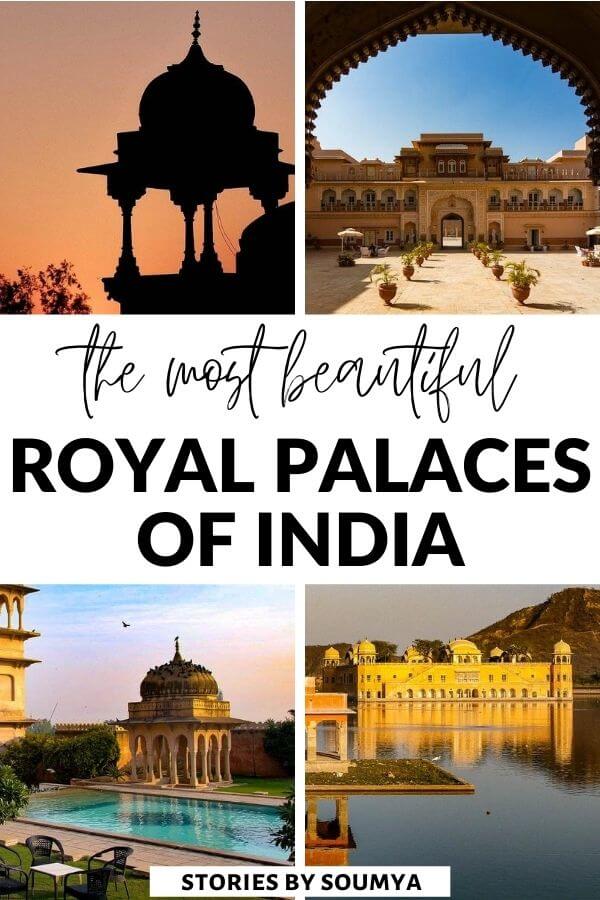
Please note: This post may contain affiliate links which means I may earn a commission if you make a purchase by clicking a link on this post. This will be at no additional cost to you. Affiliate links help me keep this website up and running. Thanks for your support!
Since I have not visited all the gorgeous palaces in India yet, I asked my favorite travel blogger friends who have traveled extensively in India to supplement my list. And lo and behold! I have this magnificent list of the 17 most beautiful palaces in India that every traveler needs to have on her India itinerary.
And the best part is there are options from all over the country – North, South, East, and West. So, wherever you are traveling in India, it won’t be difficult to find a pretty palace right next door. So, what are we waiting for? Let’s dig in!
Amba Vilas Palace, Mysore Karnataka
Editor’s choice

A resplendent Mysore Palace – one of India’s most well-known palaces
The Amba Vilas Palace or the Mysore Palace for short is one of the most beautiful palaces of India. It is also one of the most well-researched and highly visited royal residences in India. And for no small reason.
Mysore Palace is the official residence of the Wadiyar dynasty who established the Kingdom of Mysore in 1399. The architecture is a beautiful Indo-Saracenic with blends of Hindu, Islamic, Rajput, and Gothic architectural styles.
The two durbar halls or the halls of ceremonies of Mysore Palace are especially striking. Colorful pillars and vibrantly-painted ceilings and walls adorn these halls. Walking through the palace’s audience hall is probably one of the most colorful experiences in India. Whenever you are in Mysore, you should absolutely not miss out on a trip to the Amba Villas Palace.
Tips for visiting Mysore Palace in India
- The best way to see Mysore Palace, one of the most charming palaces of India, is to take a guided tour. Here are a couple of good ones.
1. A private day tour to Mysore from Bangalore
2. A private tour of Mysore Palace and one of Tipu Sultan’s summer palaces in Srirangapatna from Bangalore - The palace is lit up between 7 – 8 pm every Sunday and on public holidays. A lit-up Mysore Palace against the dark is a sight to see.
Also Read: More Interesting Things to do in Mysore, Karnataka
Tipu Sultan Summer Palace, Bangalore, Karnataka
Contributed by Anwesha from Going Places with Anwesha

Black is not a common color used in palaces. Yet, Tipu Sultan’s Summer Palace in Bangalore is all covered in black.
Image credits: Anwesha from Going Places With Anwesha
The Tipu Sultan Summer Palace in Bangalore is one of two palaces with the same name. Another summer palace of Tipu Sultan is in Srirangapatna, Mysore, where he was born and ascended to the throne.
The summer place in Bangalore was the summer residence of Tipu Sultan, who built it to reflect Indo-Islamic architectural style. After Tipu Sultan’s death in the Fourth Anglo-Mysore War, this palace was used by the British Administration as its Secretariat until 1868. Today the Archaeological Survey of India takes care of the palace, preserving its glory in entirety.
Tipu Sultan’s Summer Palace in Bangalore is remarkable. Built entirely of teak and festooned with pillars, arches, and balconies, this royal mansion is a sight for sore eyes. The entire wooden portion of the palace is colored black with golden motifs on the arches and pillars. Stone staircases lead upstairs to a central open area, which was used as the durbar by the Tipu Sultan to receive his subjects.
On the lower ground, a museum now displays artifacts (portraits, clothing, trinkets) from the days of the ruler and associated royalty. The museum showcases a spectacular replica of Tipu’s Tiger, the original of which is in display in the Victoria and Albert Museum in London.
Tips for visiting Tipu Sultan’s Summer Palace in Bangalore
- The palace has enough spots to take beautiful photos. Even though the palace remains open till 5:30 in the evening, visiting the palace in the day will give you a better chance of taking remarkable photos indoor.
City Palace, Jaipur Rajasthan
Contributed by Subhadeep from My Travel Frames

Among the unmissable palaces in India is Jaipur’s City Palace.
Image credits: Pixabay
Jaipur, the pink city of India, has a beautiful palace in the centre of the town. This palace was the administrative seat of Maharajas of Jaipur till the year 1949 before the town was merged with the Union of India. The city palace was first built during the reign of Maharaja Sawai Jai Singh II who moved his court from Amer to Jaipur in 1727 due to increasing population and shortage of water.
The present-day palace complex is spread over a large area in the heart of the old city, one of the best places to visit in Jaipur. After Maharaja Jai Singh II had built the foundation, his successors added more buildings and courtyards to the premises bearing different architectural styles. One can find a blend of Rajput, Mughal and European architecture in different structures inside the palace complex.
Three gates lead to the palace complex – Tripolia Gate, Virendra Pol and Udai Pol. The most attractive courtyard inside the palace named Pritam Niwas Chowk has four more gates to the main palace building or Chandra Mahal. These gates which are the most popular photo spots inside the city palace are believed to represent the four seasons and four Hindu deities.
Chandra Mahal is still the residential building of the royal family. It has seven floors with each having a unique local name. Mubarak Mahal is now Sawai Man Singh Museum. Many prominent galleries inside the palace are open to visitors now. Sabha Niwas (Hall of Audience), Textile Gallery, Arms Gallery, Painting Gallery, and Transport Gallery are among them.
Tips for visiting City Palace, Jaipur
- Reserve at least 2 hours to explore the entire palace and its many galleries.
- The palace closes to visitors between 5 – 7 pm everyday. So, make a note of that time.
Rambagh Palace, Jaipur, Rajasthan
Contributed by Mariellen from Breathe Dream Go
“One evening during the Jaipur Literature Festival, I found myself on the lawn of the Rambagh Palace having drinks under the full moon with a new friend. It was getting late, we were the only guests left, and the Rajasthani musicians had just started a final set. The silhouette of the magnificent palace cast a shadow on the sweeping lawn and the moon touched everything with a silver tinge. It was one of the most romantic, magical evenings of my life, an Incredible India moment writ large”, Mariellen reminisces.
Set on expansive grounds in the centre of Jaipur, Rajasthan, Rambagh Palace represents the royal heritage of one of India’s great cities. The property has belonged to the royal family of Jaipur since 1835. During the reign of Maharaja Sawai Madho Singh, it was converted into a hunting lodge (1887). In the 1920s, a royal residence was designed and built by architect Sir Samuel Swinton Jacob for the Maharaja of Jaipur, Sawai Man Singh II — who added a number of royal suites in 1931. It was the principal residence of the Maharaja Sawai Man Singh II and his queen, legendary beauty Maharani Gayatri Devi.
Today, Rambagh Palace is a luxury hotel operated by the Taj Hotels Group.
With 78 grand rooms and suites, several fine dining and cafe options, lounges, bars, and a spa, the Rambagh Palace can cater to every desire and make you feel like royalty.
As an authentic example of Rajputana, the palace is extravagantly decorated, as befitting the former chambers of the Maharaja. Though I have never stayed there, I have visited many times for dinner or drinks, always researching what to wear in India and dressing up for the occasion. The Rambagh Palace is much more than a hotel, it is a magnificent landmark, a grand icon, and a citadel of stories — and an absolute must-visit destination when you are in Jaipur.
Tips for visiting Rambagh Palace, Jaipur
- The hotel offers a historic tour to visitors and guests that you should totally join. It highlights the hand-carved marble latticework, sandstone balustrades, 18th-century crystal chandeliers, cupolas and cenotaphs, and gorgeous Mughal Gardens in the palace.
Click here to book your stay at the Rambagh Palace.
Vijay Vilas Palace, Mandvi, Gujarat
Contributed by The Wicked Poet

Vijay Vilas Palace, Mandvi – An eclectic mix of Rajput and Bengali architectural styles.
Image credits: The Wicked Poet
Named after the heir to the throne Shri Vijayaraji, the Vijay Vilas Palace was built by the King of Kutch Maharao Shri Khengarji III in 1929. Originally designed as a summer resort, the Royal Family permanently shifted to this Palace after the 2001 Gujarat Earthquakes.
Probably one of the finest examples of Rajput Architecture in Gujarat, it also blended elements of Bengali Architecture best encapsulated in the peripheral domes. This architectural marvel is set in in the middle of intricately designed gardens with well laid water channels and fountains. Replete with colored glass-work, stone carvings, and exquisite murals, Vijay Vilas Palace is an absolute must-have in your Kutch bucket list.
Today, Vijay Vilas Palace is one of the highest rated heritage hotels in Gujarat. It has 6 heritage rooms and 14 heritage villas which you can book directly on their website here.
Tips for visiting Vijay Vilas Palace, Mandvi
- As a guest, you can request a private exploration tour of the palace, its history and culture.
- The hotel has a private beach with restaurant. Be sure to catch a sunset, lounge in the deck chairs, and enjoy the solitude amidst crashing waves of the Arabian Sea.
- Check out the amazing panoramic view from the balcony at the top of the palace. You will understand why Bollywood classics like Hum Dil De Chuke Sanam and Lagaan were shot here.
- Closest airport and railway station are at Bhuj only 60 kms away from the palace.
Click here to book your stay at Vijay Vilas Palace, Mandvi.
Thirumalai Nayakar Palace, Madurai, Tamil Nadu
Contributed by Meenakshi from Polka Junction

Decorated pillar at the Thirumalai Nayakar Palace, Madurai
Image credits: Meenakshi from Polka Junction
Thirumalai Nayakar Palace is a 17th-century palatial structure that served as the residence of the Nayak dynasty in Madurai. Named after the ruler Thirumalai Nayak who reigned over the city of Madurai for over two centuries, it is one of the finest works of Indo-Saracenic architecture in Tamil Nadu. The palace is also commonly known as Madurai Palace and Nayakar Mahal.
Apart from Madurai Palace’s vast Instagram-worthy corridors and courtyard, the interior of the once celestial pavilion (now a museum) is also a treat to shutterbugs. With impressive stucco work over the arches and massive white pillars, the palace has served as a backdrop for many Indian movies.
The palace was supposedly many times larger than in its present existence. However, Thirumalai Nayak’s grandson demolished much of the sprawling structure when he planned to shift the capital to Tiruchirapalli.
Restoration work was taken up by the British that saw to the palace being renovated. Then, they used it as barracks for its forces as well as a manufacturing unit. Two decades post-independence, Madurai Palace was declared as a heritage monument.
Tips for visiting Madurai Palace
- Do not miss the half-an-hour sound and light show, that happens every evening inside the palace.
Ujjayanta Palace, Agartala, Tripura
Recommended by Fuad Omar from A Walk In The World

Ujjayanta Palace in Agartala, Tripura is a lesser-known but beautiful palace in India.
Image credits: Fuad Omar from A Walk in the World
One of the most beautiful palaces of India that gets much lesser fame than it is due is the Ujjayanta Palace in Agartala, Tripura. In fact, not many of us even know of it.
Radha Kishore Manikya, then king of Tripura, built the Ujjayanta Palace between 1899 to 1901. It acted as his residence during that time. After that it was home to every ruler of Tripura until the government of India boughtit from the royal family. It now functions as a state museum.
Sprawled on a huge estate of one square kilometer, Ujjayanta Mahal is a thing of beauty. The design is a harmonious blend of British, Roman and Mughal architectural styles.
Ujjayanta Palace is pure white in color and set within a huge complex of Mughar-era gardens. Especially striking are the palace’s magnificent tile floors, carved wooden doors, and a curved ceiling in the Chinese room.
Tips for visiting Ujjayanta Palace, Agartala
- Plan to spend your twilight hours here so that you can catch the palace’s exquisite beauty at the time. The two storied white buildings along with their magnificent domes dispel an ethereal aura in the setting rays of the sun.
Sheesh Mahal, Jaipur, Rajasthan
Contributed by Sandy and Vyjay from Voyager

Exquisite glasswork at Sheesh Mahal, Jaipur – One of the most remarkable palaces in India.
Image credits: Pixabay
Many of India’s forts enclose grand palaces within their ramparts. These served as living quarters for royal families and their entourage. Amer Fort in Jaipur is a glittering example of one such fort. Within the fort, which is a UNESCO World Heritage Site itself, lies a massive palace built on four levels.
Sheesh Mahal or Palace of Mirrors is a romantic and beautiful living quarter inside the Amer Fort. It was built in the 16th century by King Man Singh. The palace is a glowing example of architectural finesse as well as opulence associated with the royal era of Rajasthan.
The inner walls and roof of Sheesh Mahal is lined with an intricate mosaic of mirrors and glasses. Marble pillars and intricate designs and motifs make the mansion a stunning structure. The glittering Sheesh Mahal charms you with its beauty despite being a shadow of what it was once upon a time. One can only imagine the grandeur and beauty of the place in its heyday.
It must have been an ethereal sight when the palace used to be lit up with earthen lamps whose flames reflected from the thousands of mirrors on the walls and ceiling of the palace. The Sheesh Mahal is one of the most beautiful places in Rajasthan to have pictures clicked.
Tips for visiting Sheesh Mahal, Jaipur
- Do not miss out on the other interesting palace within the fort called Sukh Niwas. It had an innovative and ingenious cooling system to protect the royal inmates from the intense heat of the desert.
Garh Palace, Bundi, Rajasthan
Contributed by Wendy from The Nomadic Vegan

The ceiling of Garh Palace in Bundi – Isn’t that exotic?
Image credits: Wendy from the Nomadic Vegan
Garh Palace in Bundi, Rajasthan was first built by Raja Rao Ratan Singh Hada in the early 17th century in the Rajput style. Today, the complex contains three separate palaces built by three different Rajput rulers. Although currently in a state of disrepair due to a dispute over its ownership, the palace contains some of the most extraordinary paintings in all of India.
“Bundi School of Painting” was well-known throughout Rajasthan and has left behind several masterpieces on the walls and ceilings of the palace rooms. Chitrashala, also known as the Ummed Mahal, has some of the best examples of these paintings. Some of the other rooms, such as the king’s bedroom, are kept under lock and key for their protection. But the staff can open them on request.
In addition to the beautiful interiors, look out for the Hathia Pol, another great photo op. It is at the main entrance to the palace and features two elephants in a fighting pose, leaning in at each other over the top of the arch.
Tips for visiting Garh Palace, Bundi
- Garh Palace is a palace-museum, so it’s not possible to sleep here. But there are lots of good hotels nearby.
- For dining options, just next to the entrance is Jay Café, whose gregarious owner serves up home-cooked vegetarian and vegan Indian dishes in thali style.
- Bringing food into the palace grounds is not a good idea, as the monkeys here can be aggressive.
Jodha Bai Mahal, Fatehpur Sikri, Uttar Pradesh
Contributed by Anjali from Cheerful Trails

A palace fit for a queen – Jodha Bai Mahal in Fatehpur Sikri.
Image credits: Anjali from Cheerful Trails
Jodha Bai Mahal is a charming red sandstone palace centrally located in the Fatehpur Sikri complex. This palace was constructed by Mughal emperor Akbar for his favourite wife, Jodha Bai, who was a Rajput princess. Also referred to as the Queen of Hindustan, Jodha Bai was the longest serving Hindu-Mughal empress.
Jodha Bai Mahal’s architecture is the confluence of Mughal and Rajputana styles. There are many intricate carvings and designs on the walls of the palace including Hindu motifs like swans, parrots, elephants, and lotuses. The super structure of the palace consists of delicate chhatris, semi-circular domes, and triangular roofs with rich detailing. The palace features numerous rooms, courtyards, gardens, worship hall, pillared walkways and a small lake. All of these give you lots of gram-worthy photo ops.
Fatehpur Sikri depicts the grandeur and royalty of the Mughal era. And Jodha Bai Mahal is the largest and most attractive piece of art in Fatehpur Sikri. It has been attracting millions of tourists every year who come to visit Agra.
Tips for visiting Jodha Bai Mahal, Fatehpur Sikri
- You can reach Jodha Bai Mahal from Agra by bus from the Idgah Bus station. This trip may take about an hour. You can also book a private cab for a quicker trip.
City Palace, Udaipur, Rajasthan
Contributed by Ellis from Backpack Adventures

City Palace in Udaipur Rajasthan is one of the most intricately designed palaces of India.
Image credits: Pixabay
The City Palace of Udaipur is one of the largest palaces in Rajasthan and a must see on anyone’s Udaipur itinerary. Udaipur was once the capital of the Mewar kingdom and in a period of 400 years the palace developed into a large complex with several interlinked buildings each with their own gateways, courtyards and gardens.
Today, the City Palace is the official residence of the Mewar family. Hence, certain areas are closed to the public. But, luckily the most historic and beautiful parts have become a museum. Several other buildings have been turned into heritage hotels. The museum is definitely worth a visit for its beautifully decorated rooms.
Tips for visiting Udaipur City Palace
- You can enjoy the best views of the City Palace from across the Pichola lake.
- If you wish to stay a night in the palace you can do so at the Shiv Niwas Hotel or the Taj Fateh Prakash.
You can easily book them and many other heritage hotels in Udaipur here.
Jal Mahal, Jaipur, Rajasthan
Contributed by Rose from Where Goes Rose

Jal Mahal in Jaipur is definitely one of the most photogenic palaces in India.
Image credits: Pixabay
Jal Mahal is an iconic Indian palace in Jaipur which gives the appearance that it’s floating upon Man Sagar Lake. For this reason, it’s well-photographed by travelers and an essential stop on any Jaipur itinerary. The palace is built in the Rajput architectural style with golden stone and symmetrical roof domes.
Jal Mahal has a bizarre history and was initially built as a duck hunting lodge for the Maharajas. The story goes that in the 18th century there was a severe drought in Rajasthan, Man Sagar Lake acted as a vital reservoir, holding the only available drinking water for the people of Jaipur. For several generations, the Maharajas of Jaipur would reinforce the dam to keep the water levels high. As the lake became sacred to the locals, the Maharajas began to use it for leisure and enjoyment. Duck hunting was a favorite hobby and they subsequently built Jal Mahal as a decadent lodge where they could practice the sport.
When the droughts ended and the water levels rose again, the palace flooded and was almost obscured from view. Nowadays, it’s not possible to go inside, but it is possible to view the spectacular palace from the shores.
Tips for viewing Jal Mahal, Jaipur
- The only palace in the list that you can view from a distance and not visit. The best way to get good pictures is to get to the designated viewing point. Uber cabs and rickshaw drivers will drop you there easily.
Aga Kha Palace, Pune, Maharashtra
Editor’s choice

Beautiful balconies of Aga Khan Palace, one of the most historical palaces of India!
One of the lesser palaces of India, Aga Khan Palace in the city of Pune is both an architectural and historical treasure trove. Even though I would say the historical bit is a little more significant here because of the palace’s connection with Bapu, the Father of the Nation.
Built in the late 19th century by Aga Khan III, the palace sports a mix of Indo-Saracenic and European architectural styles. It is replete with rose windows, Italian arches, French lawns, and long corridors.
However, Aga Khan Palace assumed a lot of significance during the Quit India Movement in 1942 when Mahatma Gandhi, his wife (Ba), and fellow freedom fighters were imprisoned here. The palace has now been converted into a museum. Different rooms showcase the lives and beliefs of Gandhi and Ba. In the backyard, you will also find the samadhis (tombs) of both of them. And that is probably the biggest highlight of the Aga Khan Palace.
Read more: How to visit the Aga Khan Palace in Pune, Maharashtra
Sovabazar Rajbari, Kolkata, West Bengal
Contributed by Madhurima from Orange Wayfarer

Sovabazar Rajbari Kolkata is one of the lesser known palaces of India but one of the quirkiest ones too.
Image credits: Madhurima from The Orange Wayfarer
Tracing back the history of Shovabazar Rajbari in North Kolkata is like taking a walk back to the history of erstwhile Calcutta, the nerve center of culture and excellence in British India. Like many other kingdoms, there are intriguing stories of treachery and vanity that ultimately led to the downfall of Calcutta!
300 years ago, Kolkata was officially recognized as one city as Job Charnock bought three adjacent villages, Sutanuti, Gobindapur and Kalikata. Sutanuti is the northern part of the city and an abode of heritage till date. This is clearly reflected in the crumbling mansions of the old city, one of which is Shovabazar Rajbari!
The founder of Shovabazar Rajbari, Maharaja Nabakrishna Deb, served the British directly. His fortune and wealth witnessed an overwhelming surge at the fall of Bengal’s last sovereign Nawab because the British favored the Maharaja. To commemorate this event, he started with the celebration of Durgapuja. Thus started the trend of associating the famous Durgapuja festivity of Kolkata with the spirit of celebration.
In fact, today the Sovabazar Rajbari is open for commoners only during the 5 days of Durgapuja. There are two Rajbari (palaces) in Sovabazar, standing one opposite another. One hailed as the Choto Rajbari, the other, as Boro Rajbari. The Thakurdalan (God’s place) is beautifully flanked by pillars, artistic figurines, Belgium glass covering an entire wall, and many other antiques from the heyday.
Tips for visiting Sovabazar Rajbari, Kolkata
- Best time to visit this quirky royal residence is during Durga Puja because that is the only time when it is open to the public.
Umaid Bhavan Palace, Jodhpur, Rajasthan
Contributed by Soujanya from The Spicy Journey

The beautiful Umaid Bhavan Palace in Jodhpur Rajasthan was the venue of Priyanka and Nick’s wedding.
Image credits: Soujanya from The Spicy Journey
Umaid Bhavan Palace is located in Jodhpur, Rajasthan. Apart from being a heritage hotel owned by the Taj Group, the palace is also one of the largest private residences in the world with 340+ rooms where the royal family of Jodhpur resides. Besides the private residence section and the hotel section, the palace has a small museum that is open to visitors. Here relics, jewelry, and photographs of the royal family and an impressive vintage car collection are showcased.
The construction of the Umaid Bhavan palace began in 1929 and was completed in 1943. Even though it was an expensive project, the aim of building this palace was to provide a livelihood to poor farmers of Jodhpur who were affected during a famine in the state. Following the completion of the massive palace that has a throne chamber, various meeting halls, banquet hall, dining halls, ballroom, library, indoor swimming pool, spa, and various tennis and squash courts, the royal family moved in.
A smaller section was given to the Taj group to run a hotel, which was recently in the news as the venue for the wedding of Indian actress Priyanka Chopra to American singer Nick Jonas. While the hotel is for guests only, the museum section is open to visitors on all days between 9am and 5pm with a small entry fee. Paying a visit to this museum is one of the best things to do in Jodhpur city.
Click here to book your stay at Umaid Bhavan Palace, Jodhpur.
Leh Palace, Leh, Ladakh
Contributed by Suruchi from AllGudThings

A gorgeous view of the town of Leh from the Leh Palace – Among the most unheard-of palaces in India.
Image credits: Suruchi from AllGudThings
On the top of Tsemo Hill, overlooking the Himalayan town of Leh, lies the 17th-century royal residence known as the Leh Palace or Lhachen Palkar. The nine-storied palace is one of its own kind and was the tallest structure in its heyday.
The construction of Leh Palace was initiated in the 16th century by Tsewang Namgyal, founder of the Namgyal Dynasty and was completed by King Sengge Namgyal, the 5th king of Ladakh. During the Dogra attack, Leh Palace suffered losses and the royal family moved. Today, the palace stands still but is in battered shape.
Leh Palace is a perfect example of Tibetan architecture. It has nine stories of which Level 1 and 2 are separate from the other levels. The lower floors were storerooms and stables whereas the upper floors functioned as the royal residence. Furnishings are simple and the palace is made of wood, mud, sand, and stone. The uniqueness is in the way the nine floors are laid down on the slanting hill and its buttressed walls.
Tips for visiting Leh Palace
- Leh Palace is dark from inside and the doors are small. So, mind your head.
- Wear flat shoes and comfortable clothing. Remove shoes before entering the temple.
Laxmi Vilas Palace, Vadodara, Gujarat
Contributed by Mayuri from Fernwehrahee

Laxmi Vilas Palace in Vadodara is one of the most stunning palaces of India.
Image credits: Mayuri from Fernwehrahee
If you are fascinated by the palaces of Jaipur, then wait till you see Laxmi Vilas Palace in Vadodara, Gujarat. Laxmi Vilas Palace was built in the 1800s by the Gaekwad family who ruled the state of Baroda. The palace sports an Indo Saracenic style and is one of the largest private buildings in India. It is also the residence of the royal family till date but part of it is open to public viewing.
Laxmi Vilas Palace has modern amenities like elevators and looks like an European country house from outside. The palace is spread over 500 acres and houses several smaller buildings. Moti Baug Palace, Maharaja Fateh Singh Museum, banquets and conventions are among them. The Museum is home to a large number of artworks belonging to the royal family and famous paintings by Raja Ravi Verma. There is also a golf club known as Gaekwad Golf Club that is open to public .
The palace has an ornate Durbar Hall which is adorned with a Venetian mosaic floor, stained glass windows from Belgium, and intricate mosaic decorated walls. The palace also has a collection of old armory, bronze sculptures, and marble statues by Felicci. If you are an art lover, you must visit this magnificent palace in India during your Gujarat visit.
Tips to visiting Laxmi Vilas Palace, Vadodara
- Take the audio tour which gives a deep insight into the history of the palace.
- DSLRs/phone cameras are not allowed inside the palace. You are allowed to capture the beauty of the palace only from outside.
Here goes our list of the most exotic and resplendent palaces of India. Which of these have you visited? And, which would you like to explore in future? Let us know in the comments below.

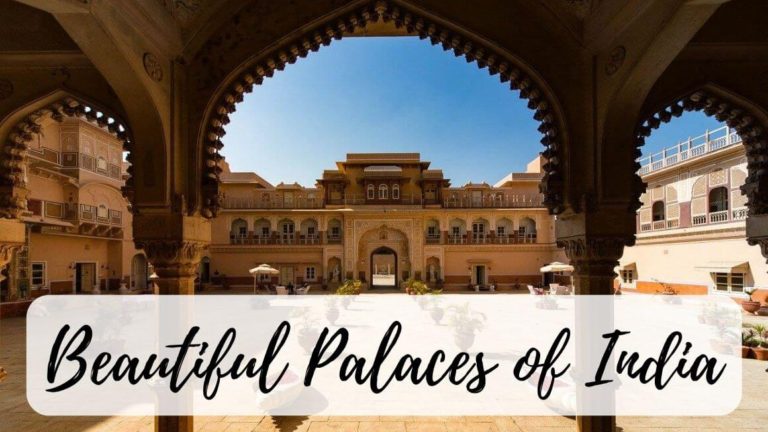
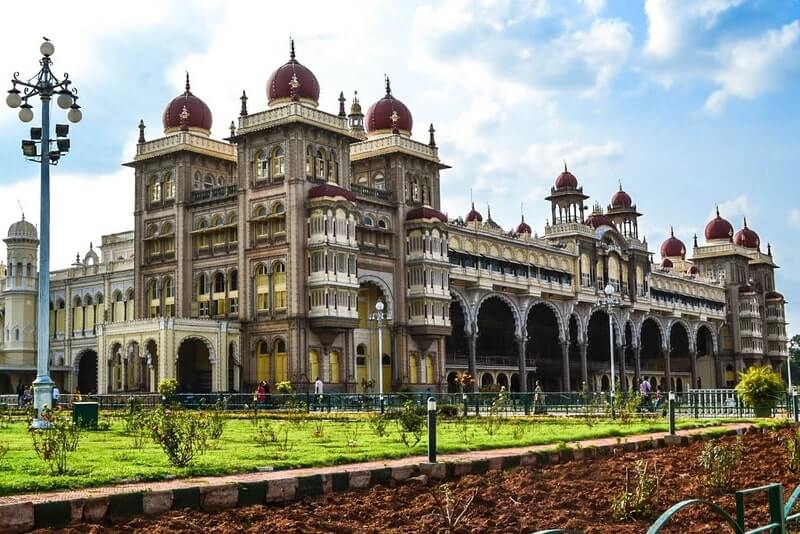
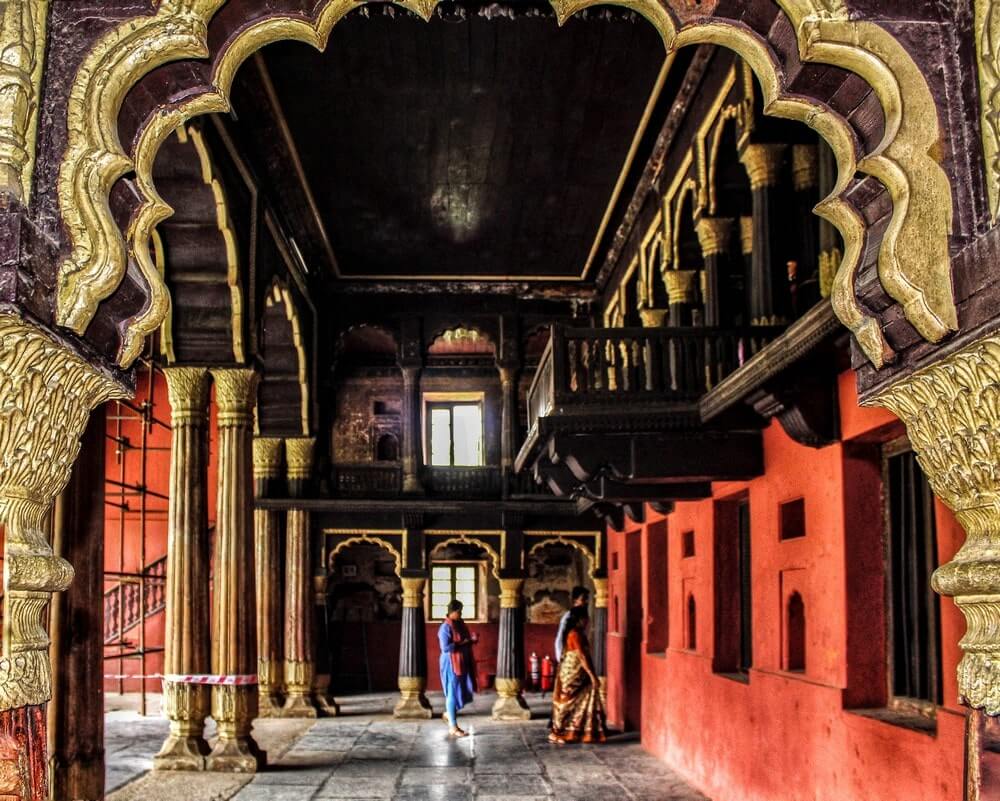
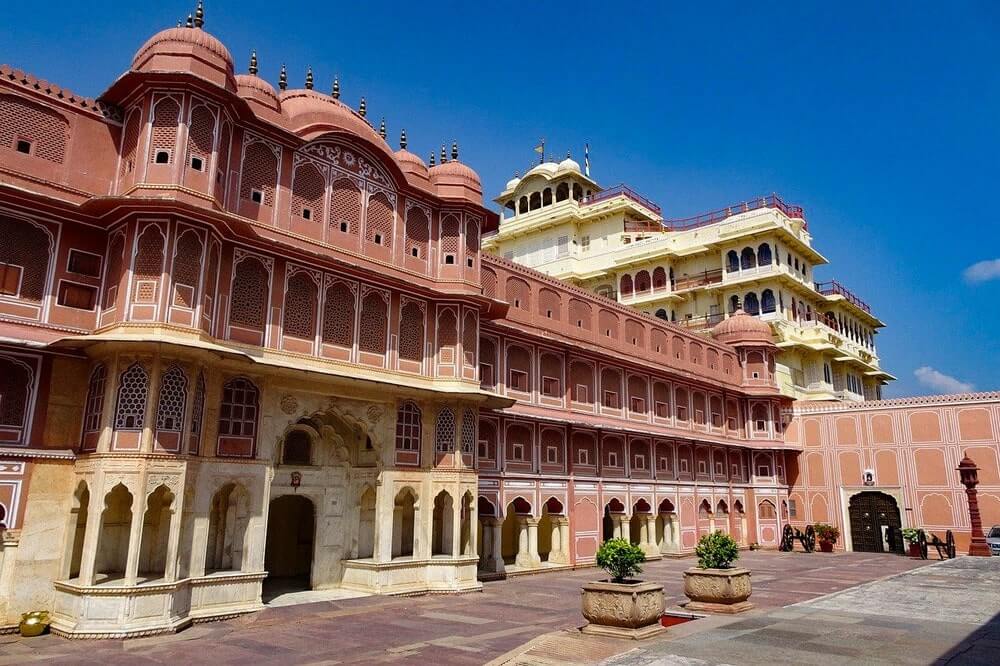
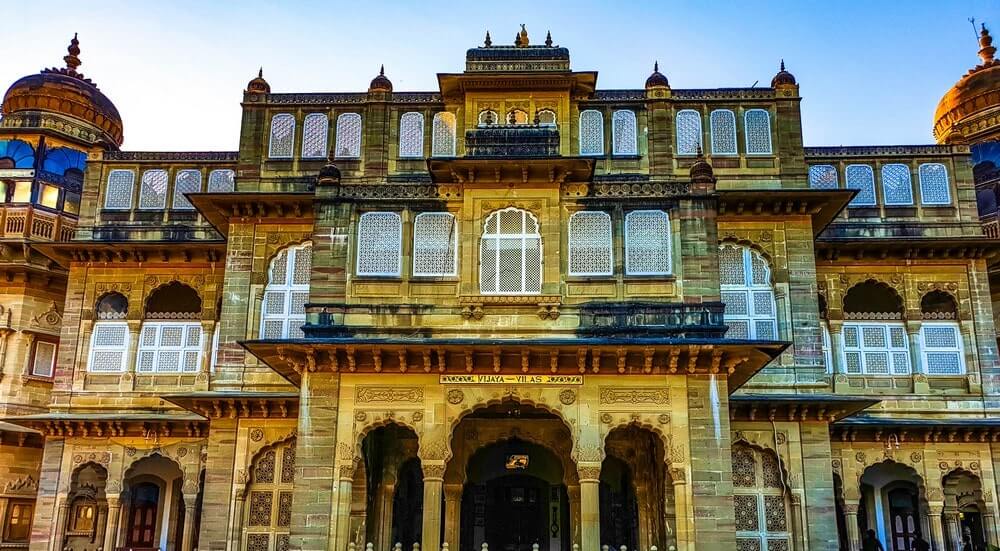
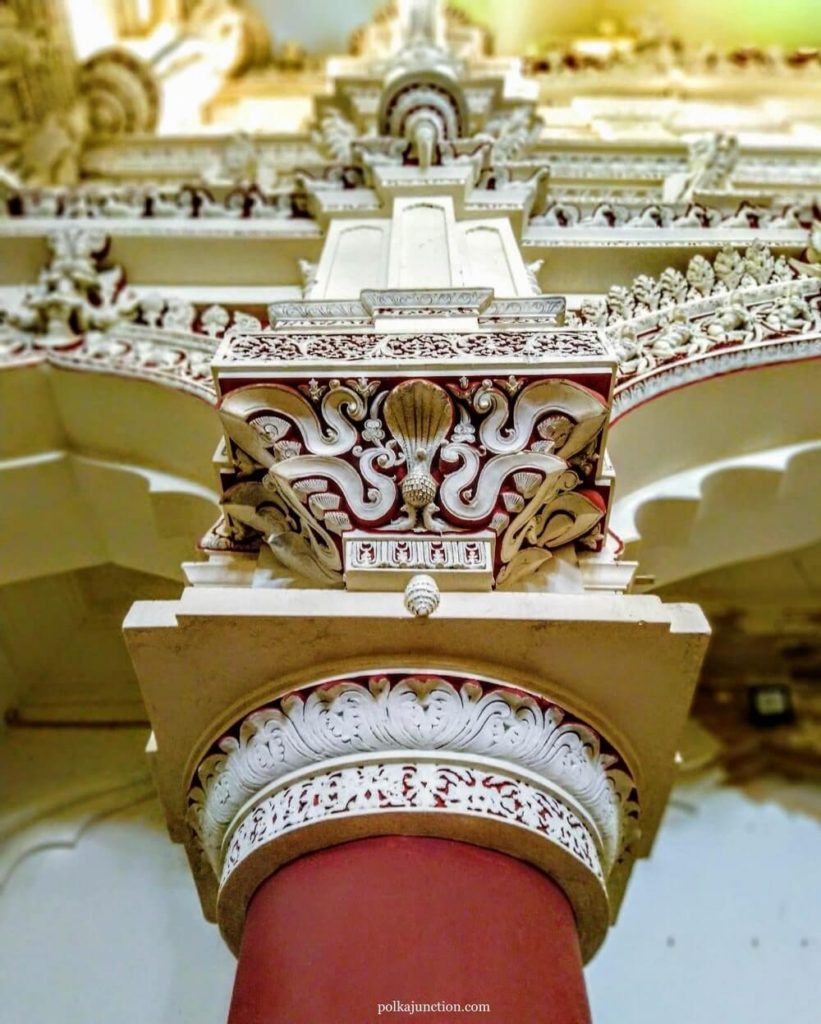
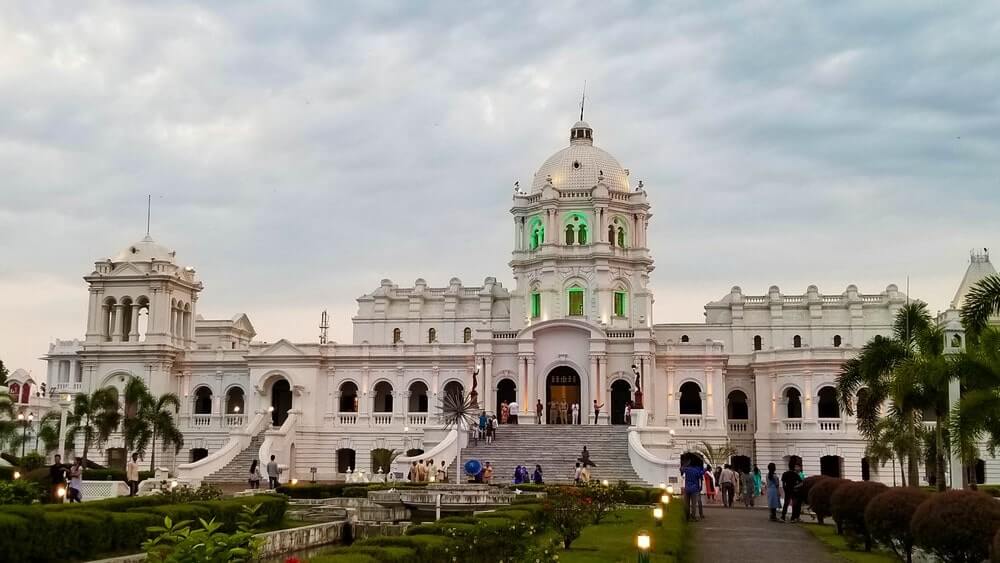
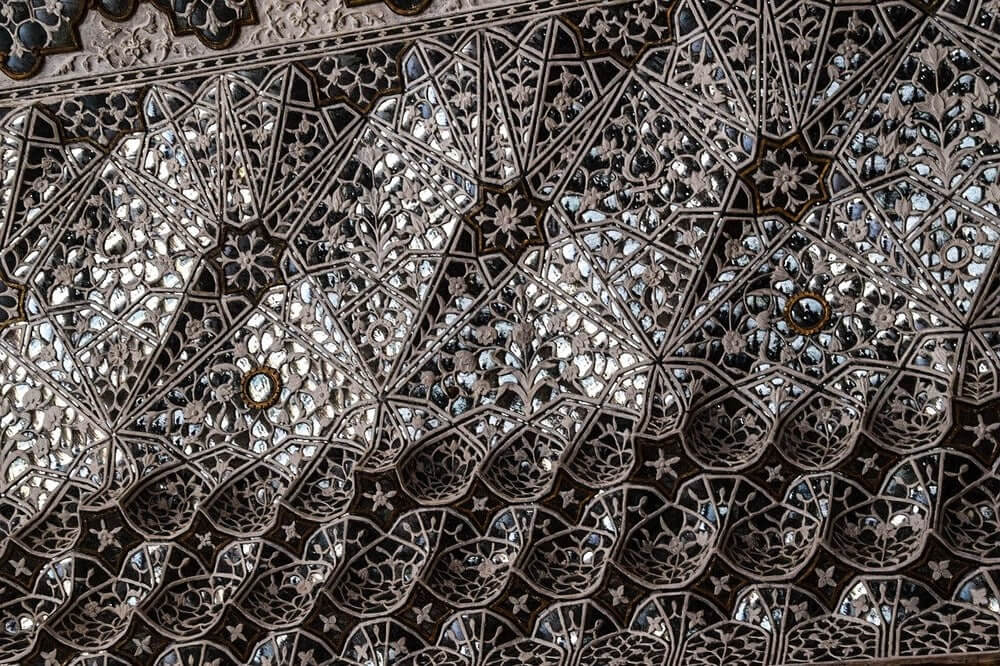
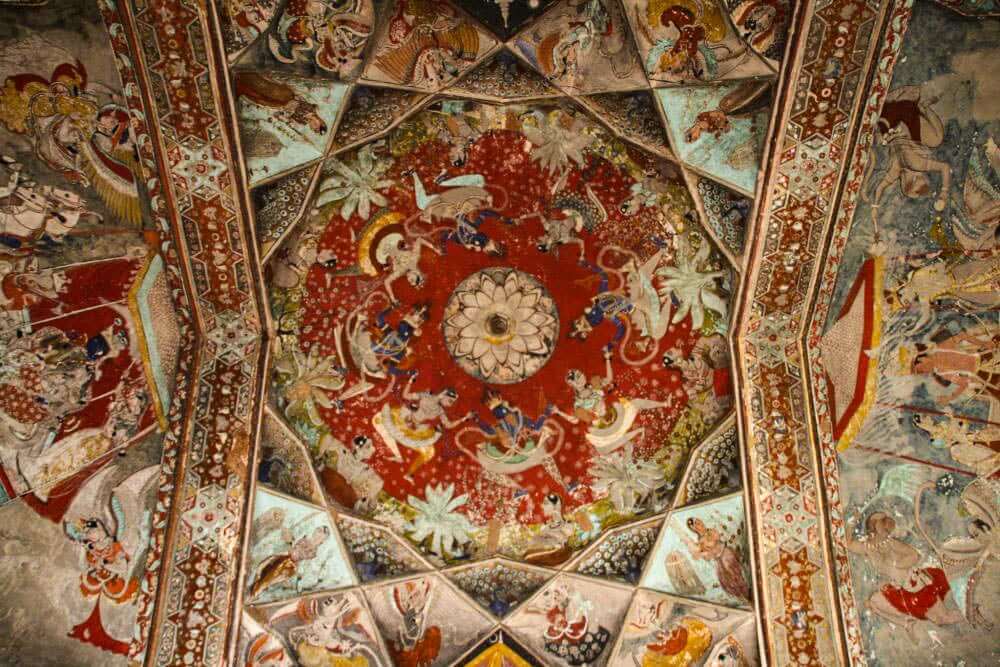
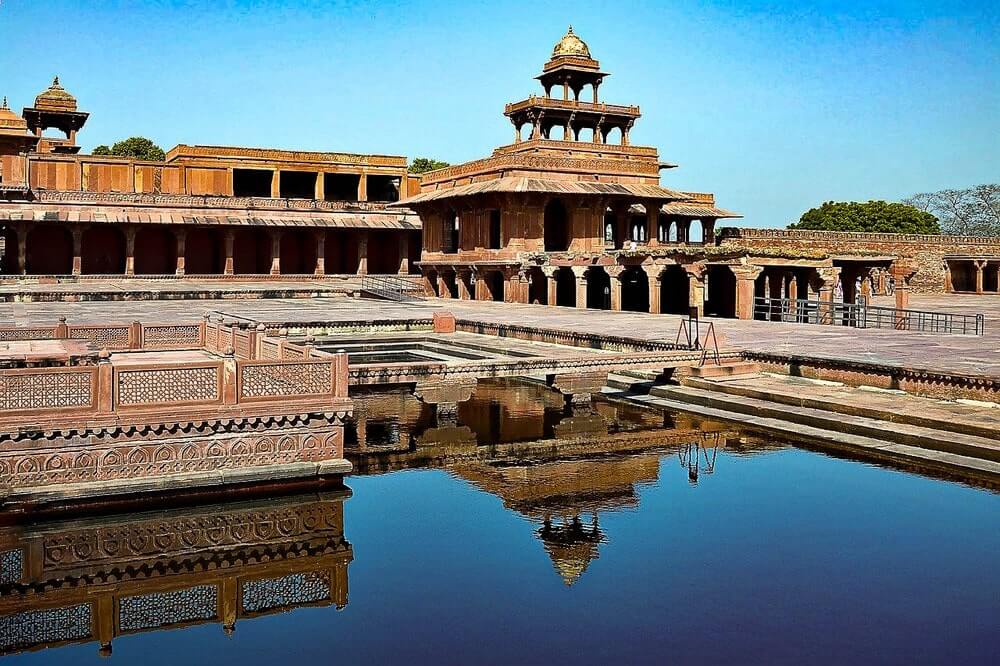
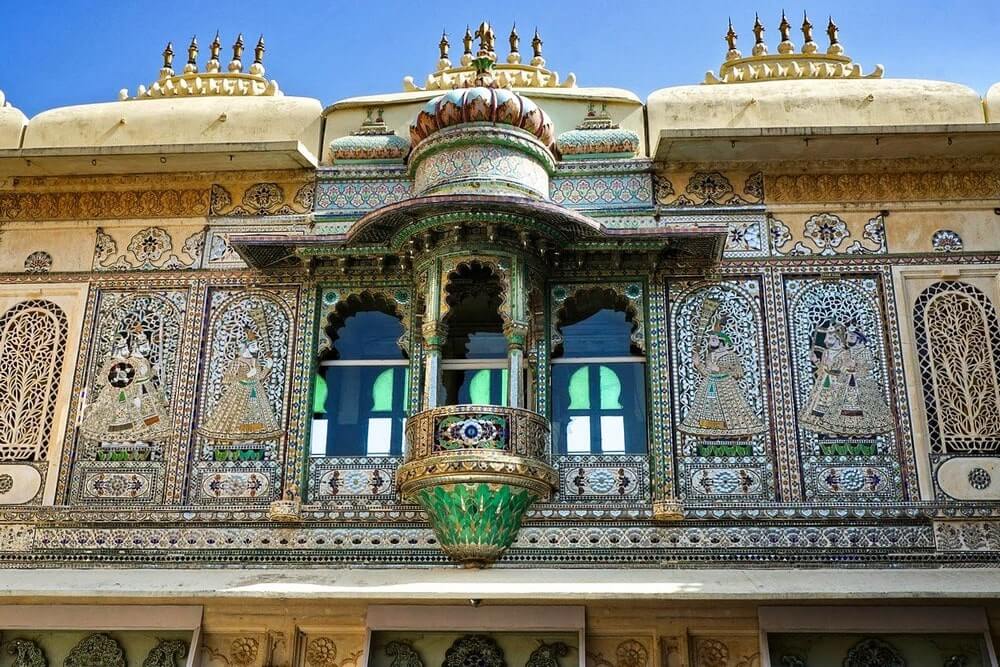
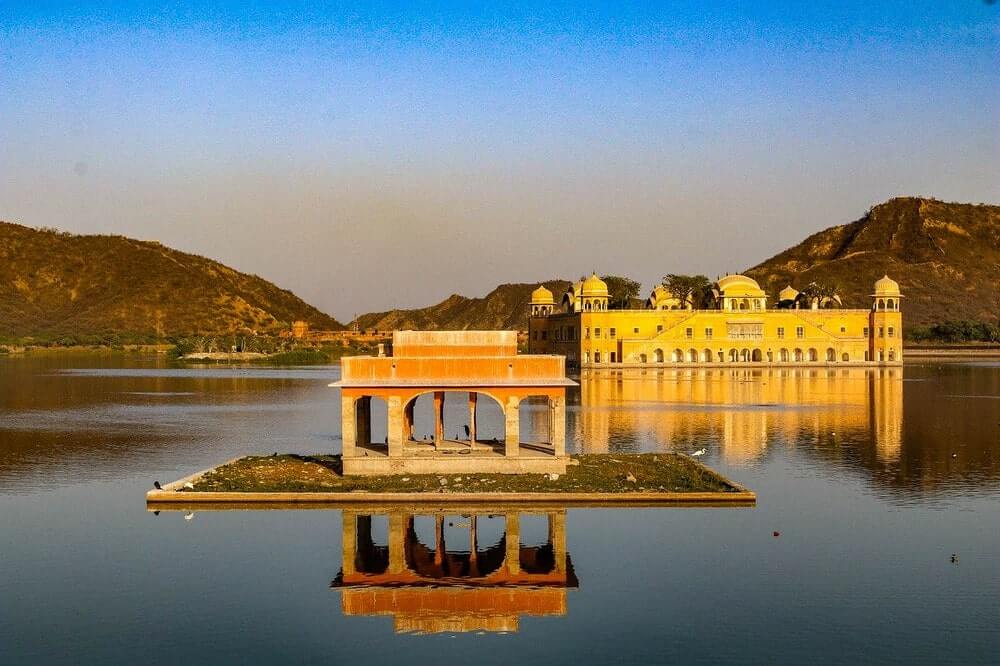
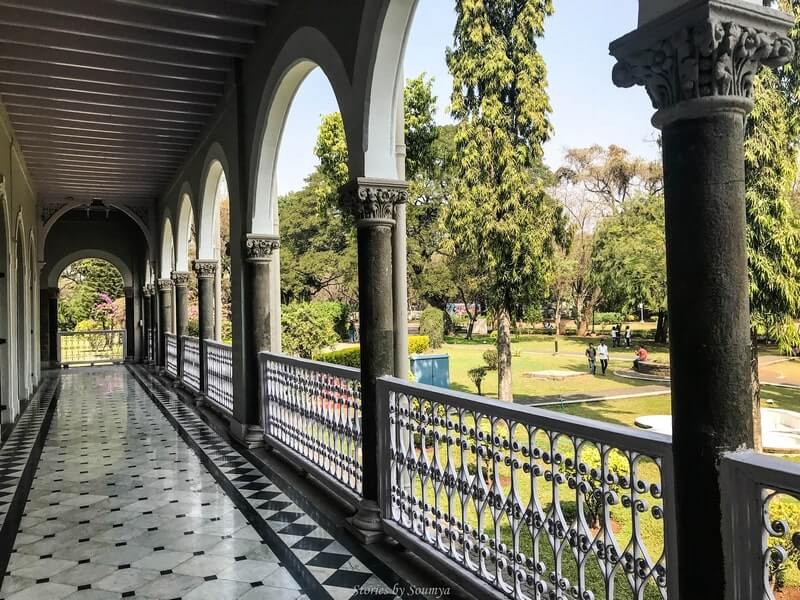
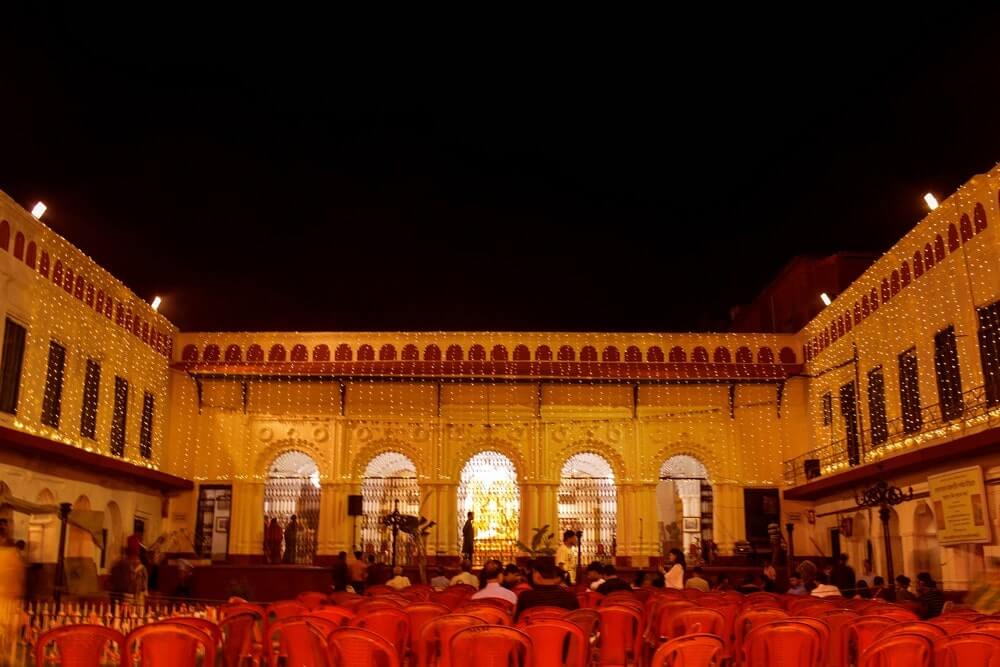
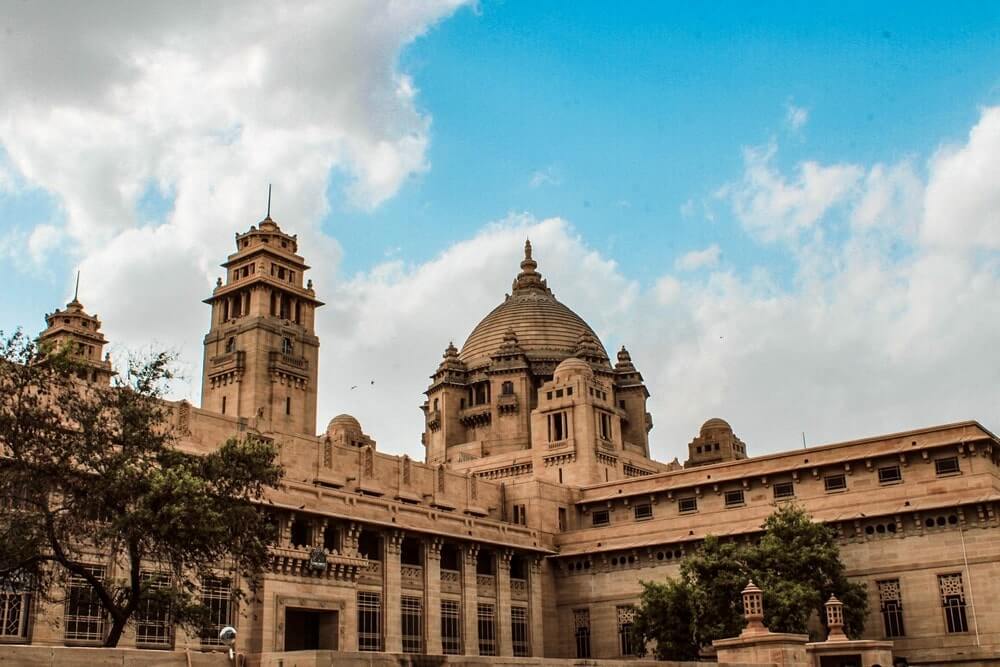
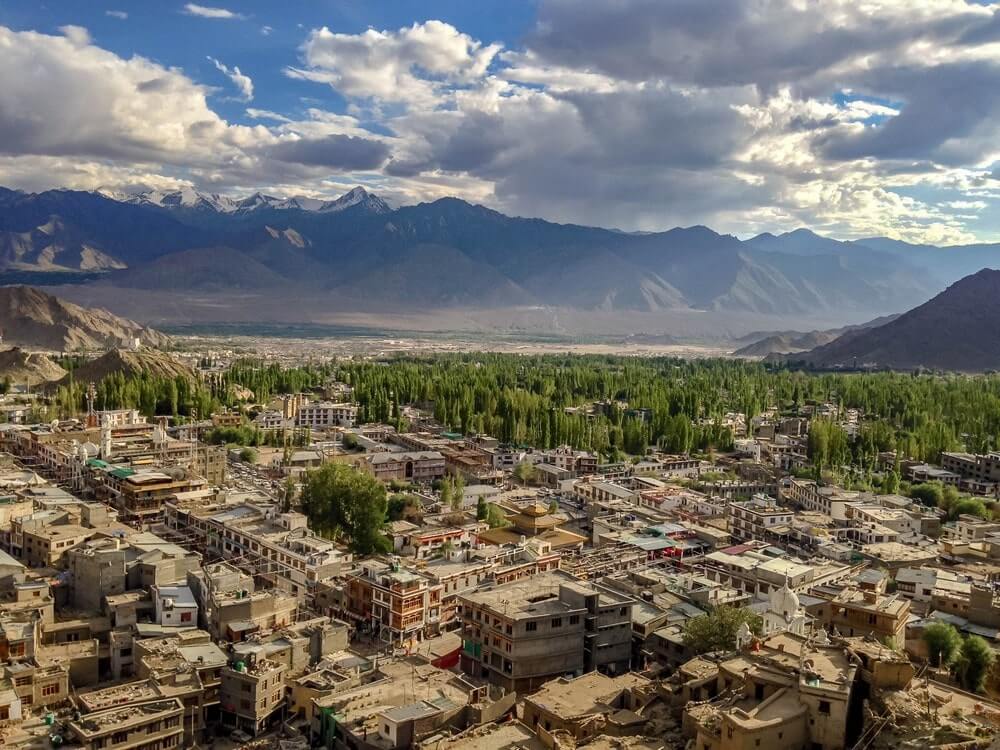
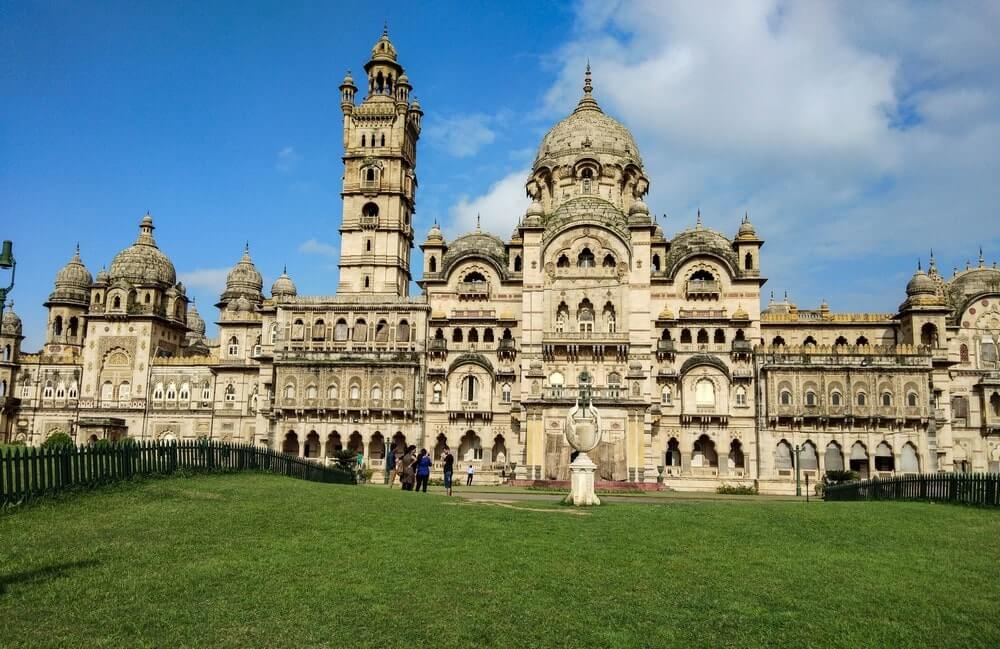
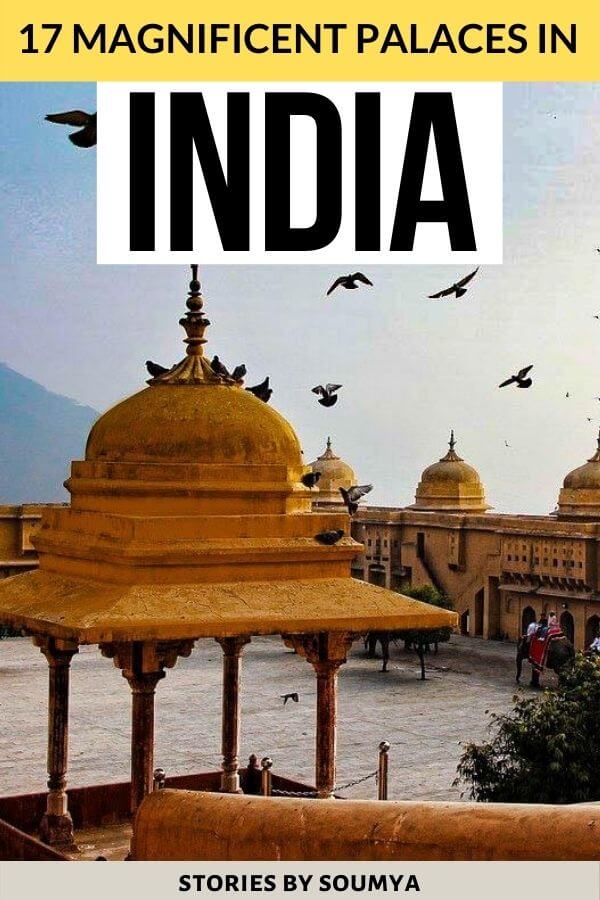
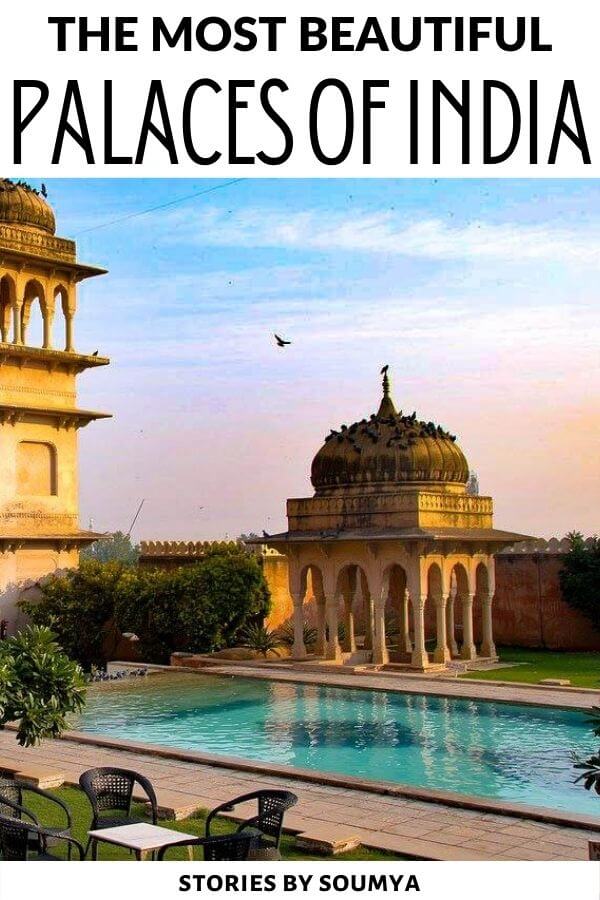
Wow so many palaces and they are all so beautiful and breathtaking – Visiting India is high on my bucket list so I am saving this post for when I travel as I definitely want to see some of these places
Laura x
Hi Laura, you definitely need to visit some of these magnificent palaces when you plan your trip to India. No trip to India is ever complete without getting awed by the resplendence of these beautiful mansions.
Wow! I did not realize that there are a lot of royal palaces in India. So far my favorite is the Vijay Vilas Palace. I have been fascinated with Rajput architecture and it’s interesting to be blended with Bengali influence. Hoping to visit this some time in the future.
One of my favorites too. Such amazing architecture. The palaces of India never cease to inspire me.
This is an incredible collection and really a check list for me. India has such marvelous palaces and such rich history that we all can be so proud of. It amazes me of the architectural mastery that we had as a nation. From your list there are seven palaces that I am yet to visit which I would now for sure. The Leh Palace, Aga Kha Palace Pune & City Palace Udaipur Udaipur would be the first ones that I would love to head to.
Wow! I have always loved our palaces and the history they have. Being a Bangalorean, I am happy to find the Tipu Sultan Palace in the list. The best thing is it is in the city and can be reached so easily. I have always had Rajasthan palaces in my list and I have always wanted to stay in them and that’s probably the reason why i have never been to Rajasthan :D. They are so expensive to stay at but I am sure it will be totally worth staying with the peacocks in the balconies and stunning views of the city. Thanks for this list Soumya, I am bookmarking it as I want to tick off each one of them.
Glad you liked it, Raksha. Even I have not stayed in any of these opulent palaces in Rajasthan but I hope to sometime soon. Will be such an experience!
Ah, what a list of fabulous palaces! The Jal Mahal in Jaipur is definitely the most photogenic one from your list. Sadly, I haven’t seen any of this places. If you would only know how many times I wanted to go see India, but somehow it never worked out for me. Hope to make it there as soon as this pandemic craziness is over!
I know right. One of those trips that never happens! But hopefully someday soon
First of all, as a Tamil, I’m super thrilled to find Thirumalai Nayakkar Mahal in your list! That said, I’m super sad that I haven’t been to most of the palaces in your list. When I was in Gujarat, Vijay Vilas Palace in Mandvi was in my itinerary but sadly some last minute changes and we didn’t make it there too. I haven’t heard of Sovabazar Rajbari palace. Thanks for introducing it to me. Leh Palace is definitely to topmost in my list, in this list!
Thanks to all my travel blogger friends, I was able to put together this wonderful list of Indian palaces. And yes Thirumalai Navkar Mahal plays an important role in it. I am glad you liked it. Even I haven’t visited so many of them yet. So many places to see!
India is a fantastic country with so many incredible attractions. One could spend a lifetime in India without having discovered all the hidden gems. It was exciting to read through your article and many of these places I had not heard of before. Thank you for sharing!
That is so true. So many hidden treasures to discover in India. Even I have not visited all these magnificent Indian palaces.
Thank you for sharing such a great blog post highlighting the palaces in India! Each palace holds much beauty in its own unique way. The palace at Jal Mahal, Jaipur, Rajasthan is so breathtaking the way it reflects in the water. I must make it to India to see these palaces someday!
I am glad you liked it Rina. Palaces form such an important part of every Indian itinerary. They reflect such an interesting bit of India’s past. And I agree with you, Jal Mahal is stunningly beautiful.
Wow Soumya this is such an extensive list and so so apt. Yes India has many palaces, thanks to its regal past but these are some exquisite palaces which shine even in the 21st century. I still remember my first visit to Vijay Vilas Palace its murals and domed alleys were so magical and so is Sheesh Mahal in Amer! Still a bit bitter that photography was not allowed in Mysore Palace when I visited but glad that has changed. Loved this post 🙂
Thanks Vaisakhi. These resplendent palaces of India always remind me how beautiful my country is!